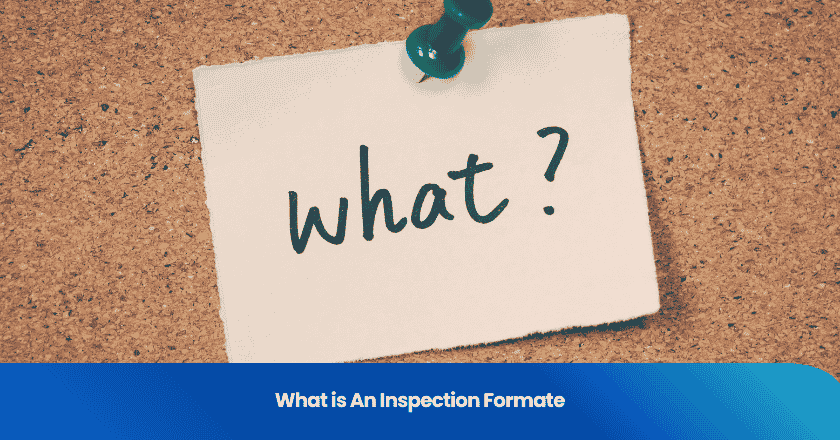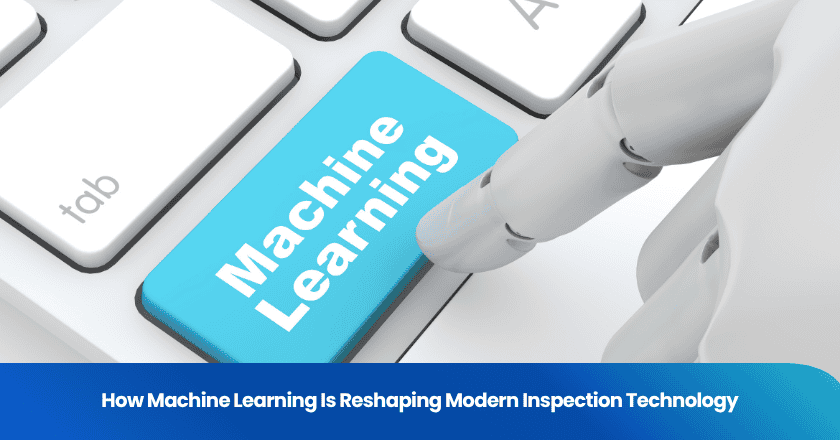
You need to combine advanced technology, robust processes, and skilled personnel to achieve effective qa inspection in 2025. This approach in quality assurance increases efficiency, accuracy, and decision-making capabilities. Early detection of issues saves costs, prevents defects from reaching your customer, and supports high-quality service. In regulated industries, compliance-driven inspection strategies reduce risk and accelerate incident resolution.
QA Inspection Overview
Evolving Role in 2025
You now face a rapidly changing landscape in quality assurance. In 2025, your role in qa inspection extends far beyond manual checks. You act as a strategic overseer, guiding automated systems and interpreting complex analytics. You need to develop strong data analysis skills to make sense of inspection results. Training AI models becomes a core part of your responsibilities, allowing you to leverage advanced tools for better outcomes.
You may find yourself working as a prompt engineer, crafting precise inputs for AI-driven inspections. Some of you will focus on risk modeling, identifying areas that need human insight. Others will take on the role of educator, helping teams understand responsible AI use and how to interpret results. This shift means you must stay adaptable and continue learning new skills.
Tip: Embrace ongoing training and collaboration with AI systems to stay ahead in your field.
Key Objectives
Your main objectives in inspection remain clear, but the methods you use have evolved. You aim to deliver reliable products that build customer trust and loyalty. You also ensure compliance with regulations, which protects your organization from legal risks. By identifying inefficiencies, you help your team work smarter and reduce waste.
Here is a summary of key objectives for inspection in 2025:
| Objective | Description |
|---|---|
| Reduced Callbacks | Early audits catch issues, saving time and resources. |
| Improved Customer Satisfaction | High-quality work fosters trust and repeat business. |
| Greater Team Efficiency | Minimizing deviations streamlines workflows. |
| Enhanced Energy Efficiency | Compliance with EPA regulations ensures sustainable operations. |
| Regulatory Compliance | Proper QA ensures adherence to codes, avoiding fines. |
| Warranty Protections | A solid QA framework helps meet warranty requirements and manage liabilities. |
You support operational efficiency and cost management by addressing problems early. Your efforts also enhance your organization's market reputation and competitive advantage. When you focus on these objectives, you help your company deliver products that meet both customer expectations and industry standards.
Best Practices for Inspection
Visual Inspection
You play a critical role in maintaining quality through effective inspection practices. Visual inspection remains one of the most reliable methods for early issue detection. When you combine visual checks with other inspection techniques, you increase the chances of catching defects before they reach the customer. This approach reduces costs and prevents unnecessary recalls.
Industry experts recommend integrating multiple inspection methods. You benefit from enhanced defect visibility, improved accuracy, and real-time feedback.
You should standardize your inspection protocols and involve cross-functional teams. These best practices for inspection lead to a significant reduction in defects and improve outcomes for your organization.
Tip: Use a combination of visual and automated inspection methods to maximize defect detection and maintain high quality standards.
Documentation & Readiness
You must prioritize thorough documentation and personnel readiness to achieve effective inspection practices. Organized records ensure you can retrieve information quickly during audits or regulatory reviews. Well-trained personnel understand their roles and can explain their decisions, which demonstrates a strong commitment to quality.
You create a culture of inspection readiness by preparing your team and systems in advance. Companies that view inspections as opportunities to showcase their commitment to quality perform better and leave a positive impression on regulators and customers. Unprepared organizations often experience confusion, which can damage their reputation.
Consider these key points for documentation and readiness:
- Effective documentation systems keep records organized and accessible.
- Well-trained staff articulate their responsibilities and understand quality principles.
- Inspection readiness allows you to respond confidently during audits.
- Quality should be a partner in business success, not a barrier.
- Leadership support helps embed quality priorities throughout your organization.
- Cross-functional movement of staff builds a holistic understanding of your business.
You strengthen your inspection outcomes by focusing on these best practices for inspection. You also support continuous improvement and build trust with your customer. When you treat quality as a shared responsibility, you create a foundation for long-term success.
Note: Regular training and clear documentation help you maintain compliance, especially in regulated industries.
Technology Integration
Automation & AI
You now see automation in inspections transforming the way you approach quality assurance. Innovative solutions such as AI, machine learning, edge computing, and cloud technologies have become essential in modern inspection processes. AI-powered visual inspection systems help you achieve higher accuracy and reduce human error. Edge computing allows you to make real-time decisions, which is critical for automated visual inspections. Cloud-based solutions give your team the flexibility to access quality documentation and track nonconformances from anywhere.
AI-powered systems use deep learning to analyze visual data with impressive precision. Convolutional neural networks can detect defects at rates above 99%. These systems operate continuously, increasing efficiency and ensuring your products meet high standards even during rapid production cycles.
Human-AI Collaboration
You play a vital role in maximizing the value of technology in inspection. To succeed, you should identify opportunities where AI can automate repetitive tasks and improve efficiency. Invest in upskilling and reskilling your team, focusing on data literacy and critical thinking. Encourage a culture of experimentation, allowing your staff to learn and adapt to new tools.
Redesign job roles so your team can focus on higher-value activities while AI handles routine work. Always consider ethical guidelines to ensure fairness and transparency. Open communication helps address concerns about AI integration and highlights its benefits for both your team and the customer. Prioritize user-friendly design and involve employees in the process. Regularly measure the impact of AI on business metrics, such as defect detection rate and test execution time saved, to ensure continuous improvement.
Quality Assurance Systems
Holistic Approach
You need a holistic approach to quality assurance if you want to deliver high-quality service throughout the entire development lifecycle. This approach means you integrate quality assurance and quality control into every phase, from planning to deployment. You do not just focus on the final inspection. Instead, you build quality into your processes from the start.
You see measurable impacts when you adopt this holistic mindset. Companies that use robust quality assurance systems report a 40% reduction in customer complaints and a 25% increase in customer retention. You also help your organization outperform competitors in both retention and revenue growth. Quality assurance and quality control together protect your business from costly failures and reputation damage.
Standards & Compliance
You must align your quality assurance system with industry standards and regulatory compliance requirements. This alignment ensures you meet legal obligations and deliver consistent results. In 2025, you face a complex landscape of regulations across regions.
To build a robust system, you should include these essential components:
- Clear definition of quality standards that match industry and regulatory needs.
- Comprehensive monitoring and data collection to track outcomes and staff performance.
- Regular audits and reviews to identify gaps and maintain high standards.
You strengthen your quality management practices by embedding these elements. You also support hvac quality assurance and ensure your qa inspection process meets both customer expectations and compliance requirements. When you focus on quality assurance and quality control, you create a foundation for long-term success and high-quality service.
Performance Analysis
Metrics & KPIs
You need to track the right metrics to measure the effectiveness of your inspection process. Performance metrics and KPIs help you understand how well your quality assurance system works. By monitoring these indicators, you can identify trends, spot weaknesses, and drive improvement.
The table below highlights the most commonly used metrics in quality assurance inspection:
| Metric | Description |
|---|---|
| Mean time to repair | Average time to fix a problem, which affects downtime and costs. |
| Test reliability | Consistency of test feedback, showing how effective your tests are. |
| Defect density | Number of defects per 1,000 lines of code, revealing the frequency of issues. |
| Escaped defects found | Defects missed during inspection but found after release, impacting customer satisfaction. |
| Active Defects | Tracks new, open, or fixed defects; a low count signals high product quality. |
| Automated Tests | Percentage of automated test cases, which increases the chance of finding bugs. |
| Total test duration | Time needed to run all automated tests, reflecting process efficiency. |
You should review these metrics regularly to ensure your inspection process supports high-quality service and compliance. Strong performance in these areas leads to better customer outcomes and fewer costly errors.
Data-Driven Improvement
You can unlock significant improvement in your quality assurance process by using real-time data analytics. Data-driven decision-making allows you to address issues before they disrupt production or affect the customer. Organizations that use systematic data collection and validation see measurable gains in performance and quality.
- You can identify and resolve problems early, which keeps production on schedule.
- Regular analysis of customer feedback helps you understand what drives satisfaction.
- Data-driven strategies lead to cost savings and better resource allocation.
You should implement automated data collection systems to ensure accuracy and reliability. This approach supports continuous improvement and strengthens your hvac quality assurance program. When you focus on performance analysis, you build a foundation for delivering quality and high-quality service every time.
Tip: Use performance data to guide your inspection strategy and maintain a competitive edge in quality assurance.
Implementation Tips
Action Steps
You can achieve effective QA inspection by following a series of practical steps. Start by integrating technology into your QA processes. Automation allows you to create, configure, and deploy environments automatically from code changes. This reduces manual errors and speeds up testing, which lets your team focus on critical tasks and customer needs.
A risk-based approach helps you prioritize evaluations based on the likelihood and impact of defects. Continuous training ensures your QA professionals stay updated with industry standards and best practices. Routine assessments and random sampling help you maintain product standards and drive ongoing improvement. Strong compliance documentation management supports supplier reliability and audit readiness.
Tip: Early collaboration between product managers, developers, and QA teams leads to faster feature approval and fewer bugs, which improves customer satisfaction and overall performance.
Overcoming Challenges
You may face several challenges during QA inspection implementation. Lack of standardized procedures can cause confusion. Establish clear operating procedures that align with regulatory requirements. Inefficient data management often slows down performance. Implement a centralized digital system to manage inspection data efficiently.
Inadequate training can limit your team's competence. Develop a comprehensive training program for QA inspectors to ensure consistent performance and improvement. A reactive approach may delay issue resolution. Adopt predictive analytics to shift toward proactive quality assurance. Poor communication can hinder performance. Foster cross-departmental collaboration using integrated software solutions. Stay updated on regulatory changes and use structured root cause analysis to address recurring issues.
Note: Overcoming these challenges strengthens your QA process, drives improvement, and ensures high performance for every customer.
You strengthen your QA inspection by combining advanced technology, robust processes, and skilled teams. Regularly evaluate and update your QA practices to align with legal requirements, improve efficiency, and enhance clarity.
Adopting AI and automation improves accuracy and helps you deliver consistent value to every customer. Ongoing review supports resource efficiency and builds long-term customer trust. Stay proactive and adapt your approach to maintain high standards.
FAQ
What is the most important trend in QA inspection for 2025?
You see automation and AI leading the way. These technologies help you detect defects faster and improve accuracy. You gain real-time insights and reduce manual errors.
How can you prepare your team for advanced QA technologies?
You should invest in ongoing training. Teach your team data analysis and AI basics. Encourage hands-on practice with new tools. Regular workshops keep everyone updated.
Why does documentation matter in QA inspection?
You need clear records to show compliance and support audits. Good documentation helps you track issues, prove quality, and respond quickly during reviews.
Which metrics should you track to measure QA inspection success?
You should monitor defect density, mean time to repair, and test reliability. These metrics help you spot trends, improve processes, and maintain high standards.
Grow your business with TradeAider Service
Click the button below to directly enter the TradeAider Service System. The simple steps from booking and payment to receiving reports are easy to operate.



